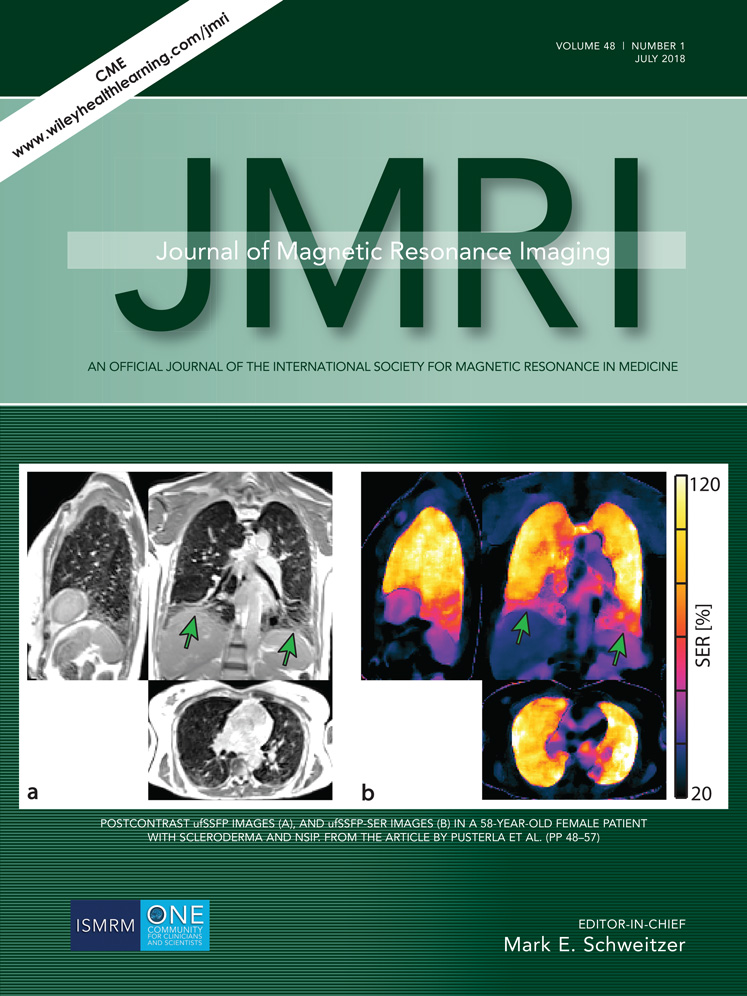MR textural analysis on T2 FLAIR images for the prediction of true oligodendroglioma by the 2016 WHO genetic classification
Abstract
Background
The genetic status of 1p/19q is important for differentiating oligodendroglioma, isocitrate-dehydrogenase (IDH)-mutant, and 1p/19q-codeleted from diffuse astrocytoma, IDH-mutant according to the 2016 World Health Organization (WHO) criteria.
Purpose
To assess the value of magnetic resonance textural analysis (MRTA) on T2 fluid-attenuated inversion recovery (FLAIR) images for making a genetically integrated diagnosis of true oligodendroglioma by WHO guidelines.
Study Type
Retrospective case control.
Subjects
In all, there were 54 patients with a histopathological diagnosis of diffuse glioma (grade II). All were tested for IDH and 1p/19q.
Field Strength/Sequence
3.0T, including T2 FLAIR sequence, axial T1-weighted, and T2-weighted sequence.
Assessment
MRTA on a representative tumor region of interest (ROI) was made on preoperative T2 FLAIR images around the area that had the largest diameter of solid tumor using Omni Kinetics software.
Statistical Tests
Differences between IDH-mutant and 1p/19q-codeleted and IDH-mutant and 1p/19q-intact gliomas were analyzed by the Mann–Whitney rank sum test. Receiver operating characteristic curves (ROC) were created to assess MRTA diagnostic performance. Sensitivity, specificity, positive predictive value (PPV), and negative predictive value (NPV) were calculated with a cutoff value according to the Youden Index.
Results
Comparisons demonstrated significant differences in kurtosis (P = 0.007), energy (0.008), entropy (0.008), mean deviation (MD) (<0.001), and high gray-level run emphasis (HGLRE) (0.002), cluster shade (0.025), and sum average (0.002). First-order features comprising entropy (area under the curve [AUC] = 0.718, sensitivity = 97.1%) and energy (0.719, 94.1%) had the highest sensitivity but lower specificity (both 45%). Second-order features such as HGLRE (AUC = 0.750, sensitivity = 73.5%, specificity = 80.0%) and sum average (0.751, 70.6%, 80.0%) had relatively higher specificity, and all had AUC >0.7. MD had the highest diagnostic performance, with AUC = 0.878, sensitivity = 94.1%, specificity = 75.0%, PPV = 86.5%, and NPV = 88.2%.
Data Conclusion
MRTA on T2 FLAIR images may be helpful in identifying oligodendroglioma, IDH-mutant, and 1p/19q-codeleted.
Level of Evidence: 3
Technical Efficacy: Stage 2
J. Magn. Reson. Imaging 2017.
Conflict of Interest
We declare that we have no conflicts of interest.




